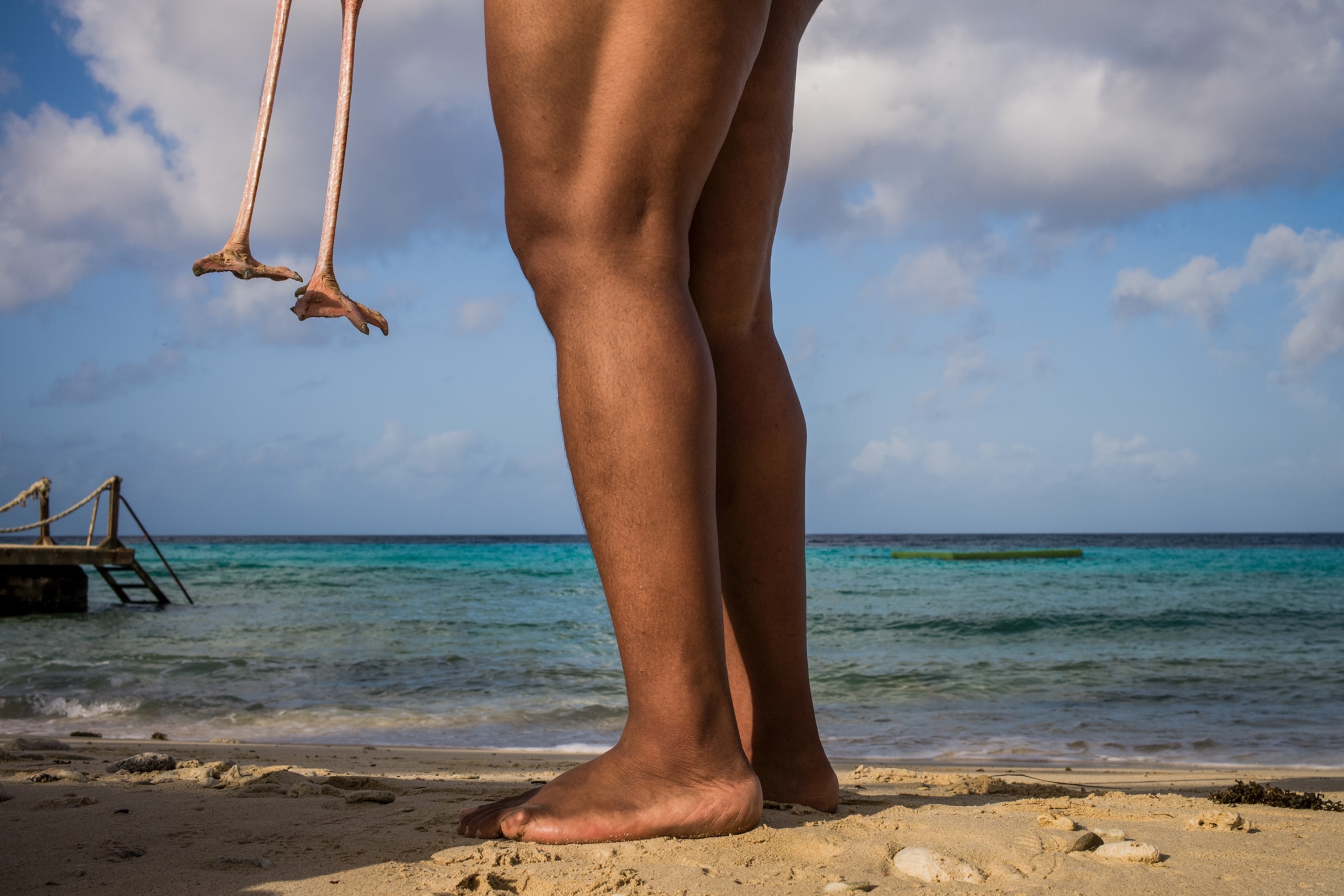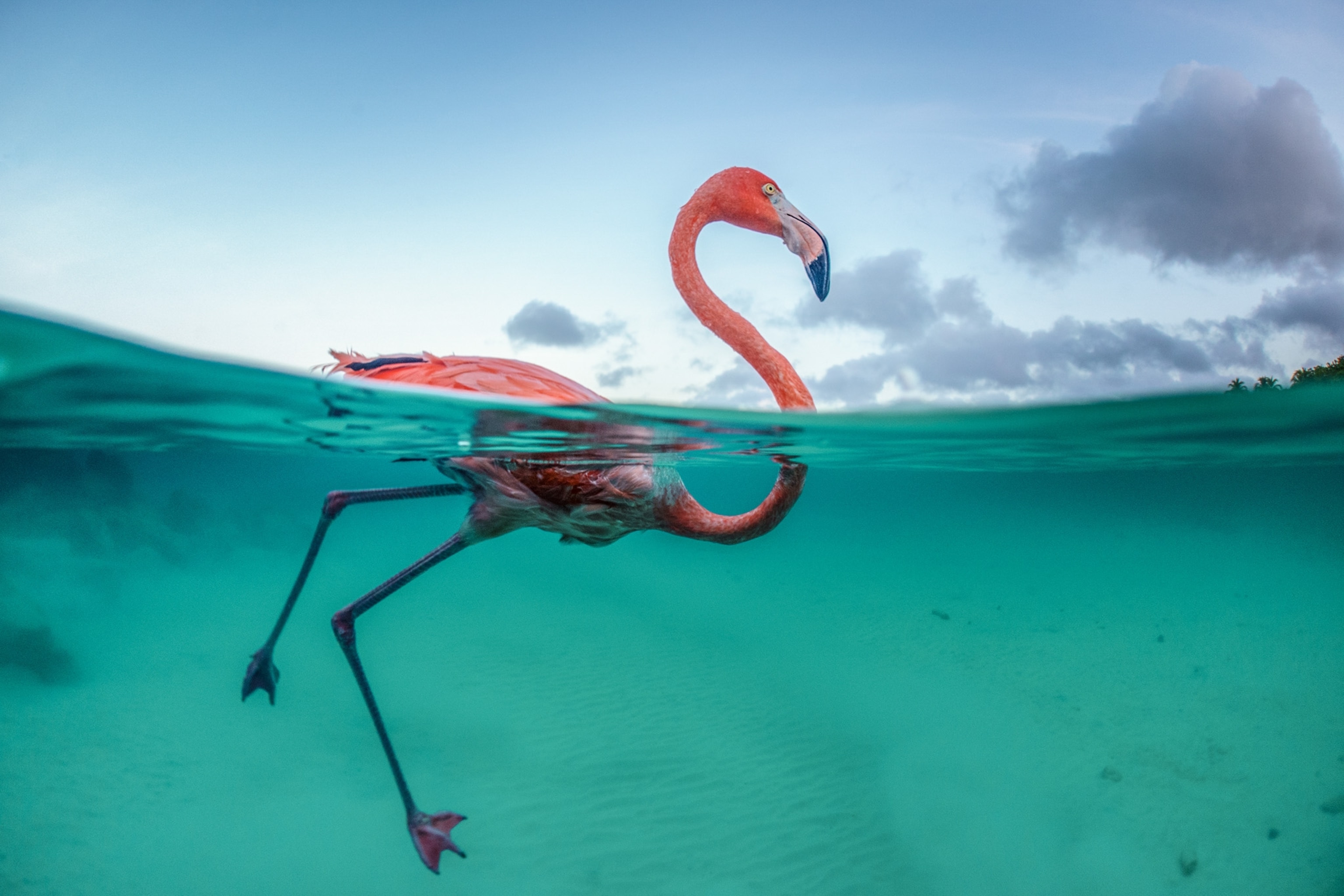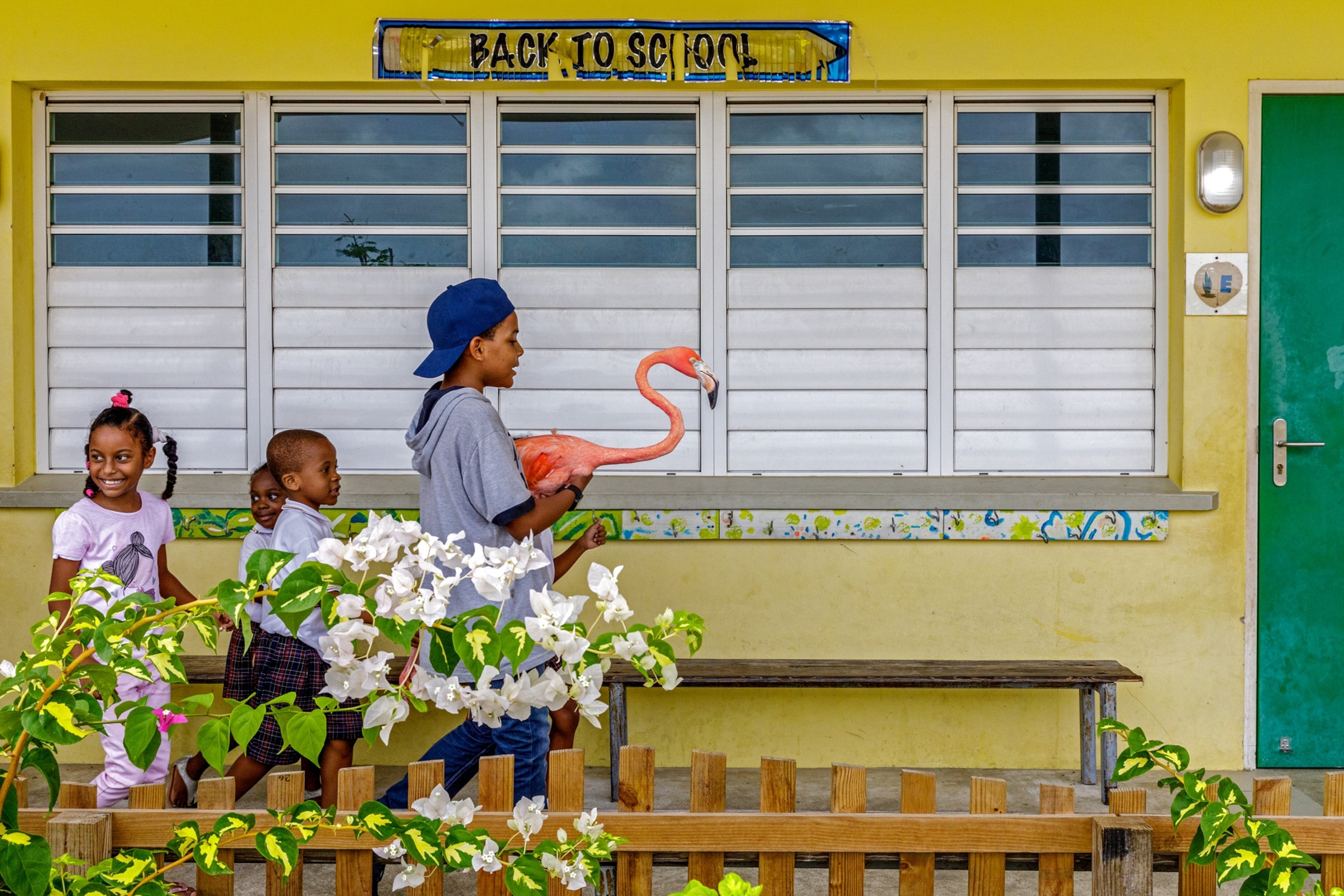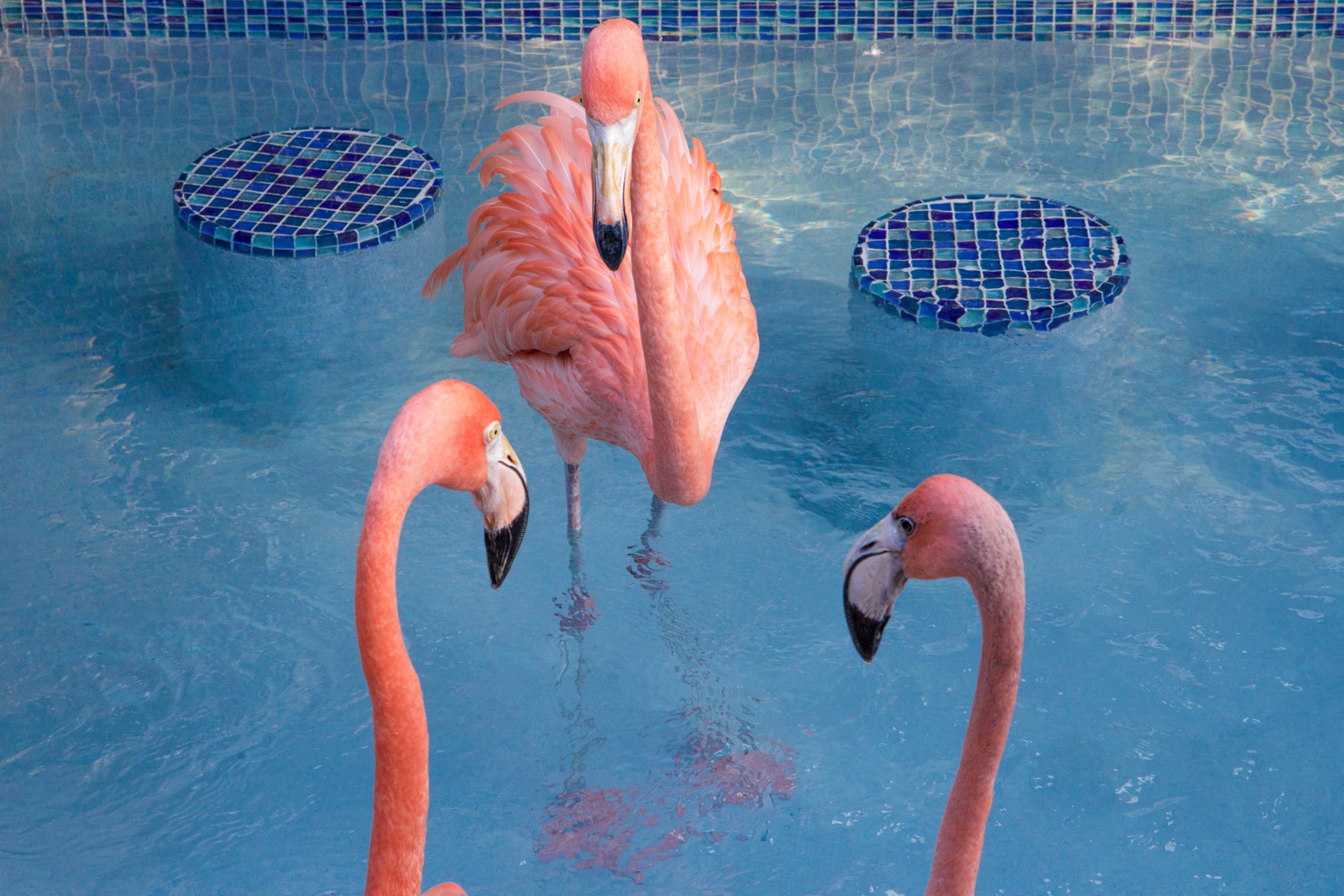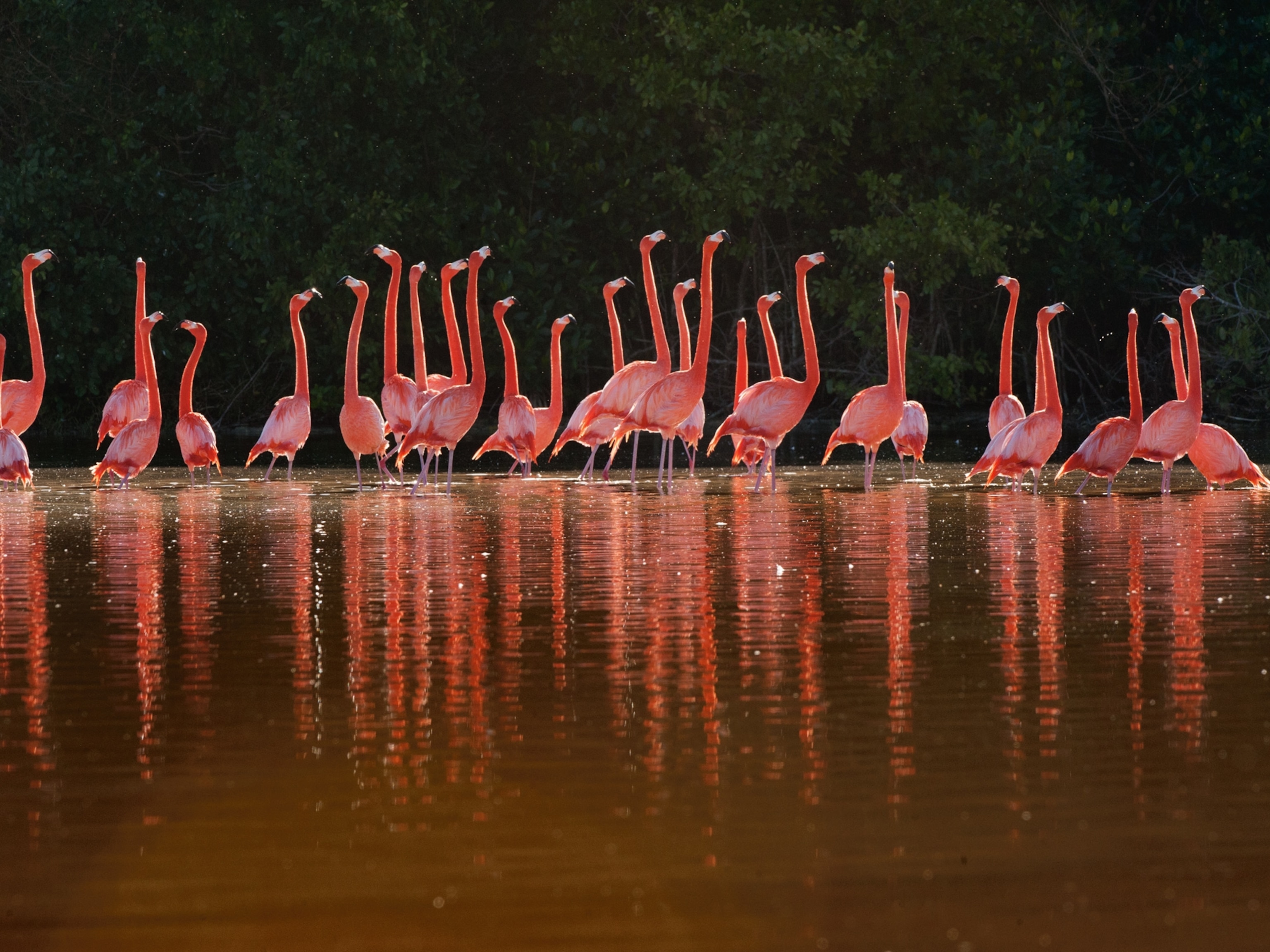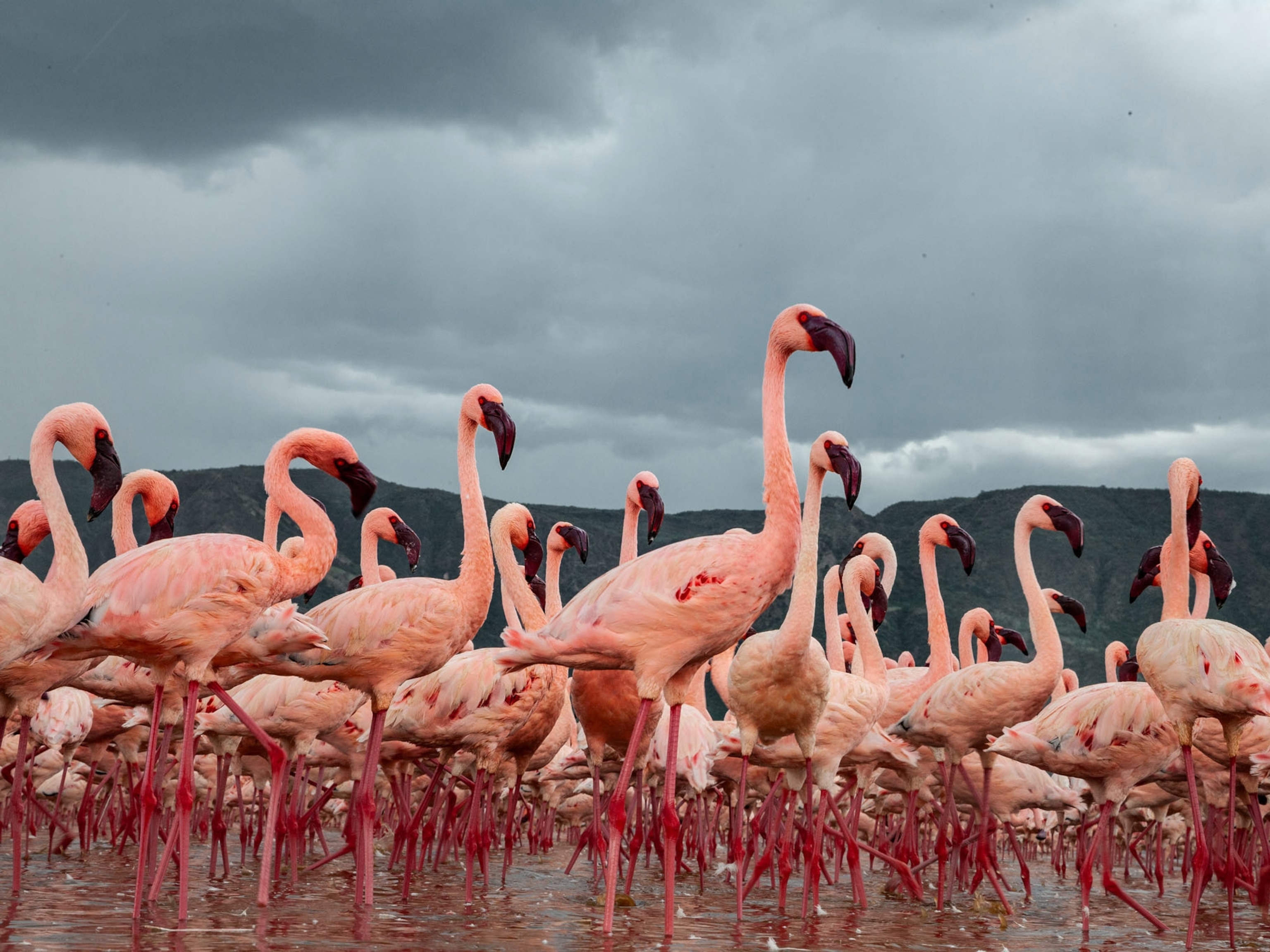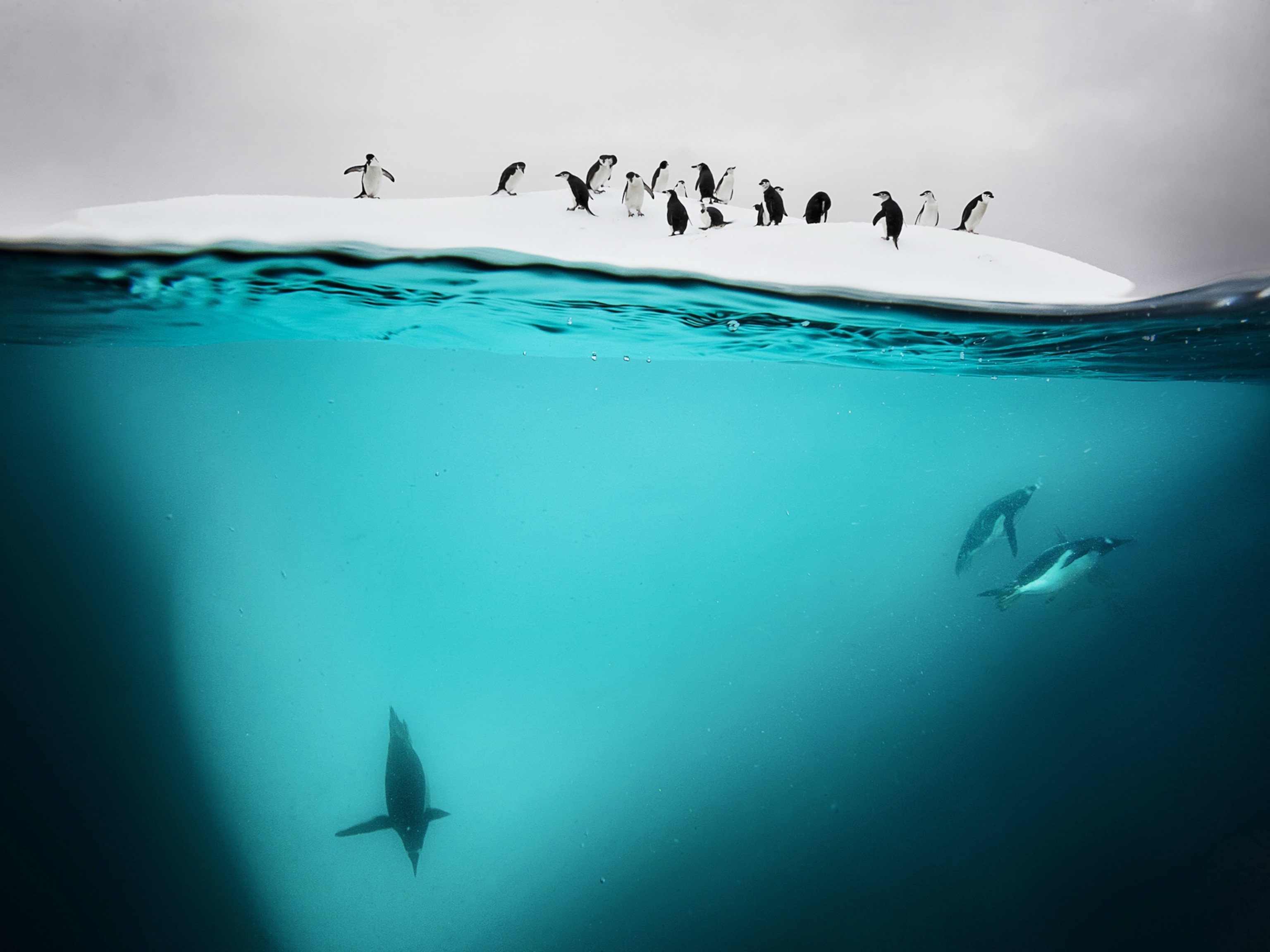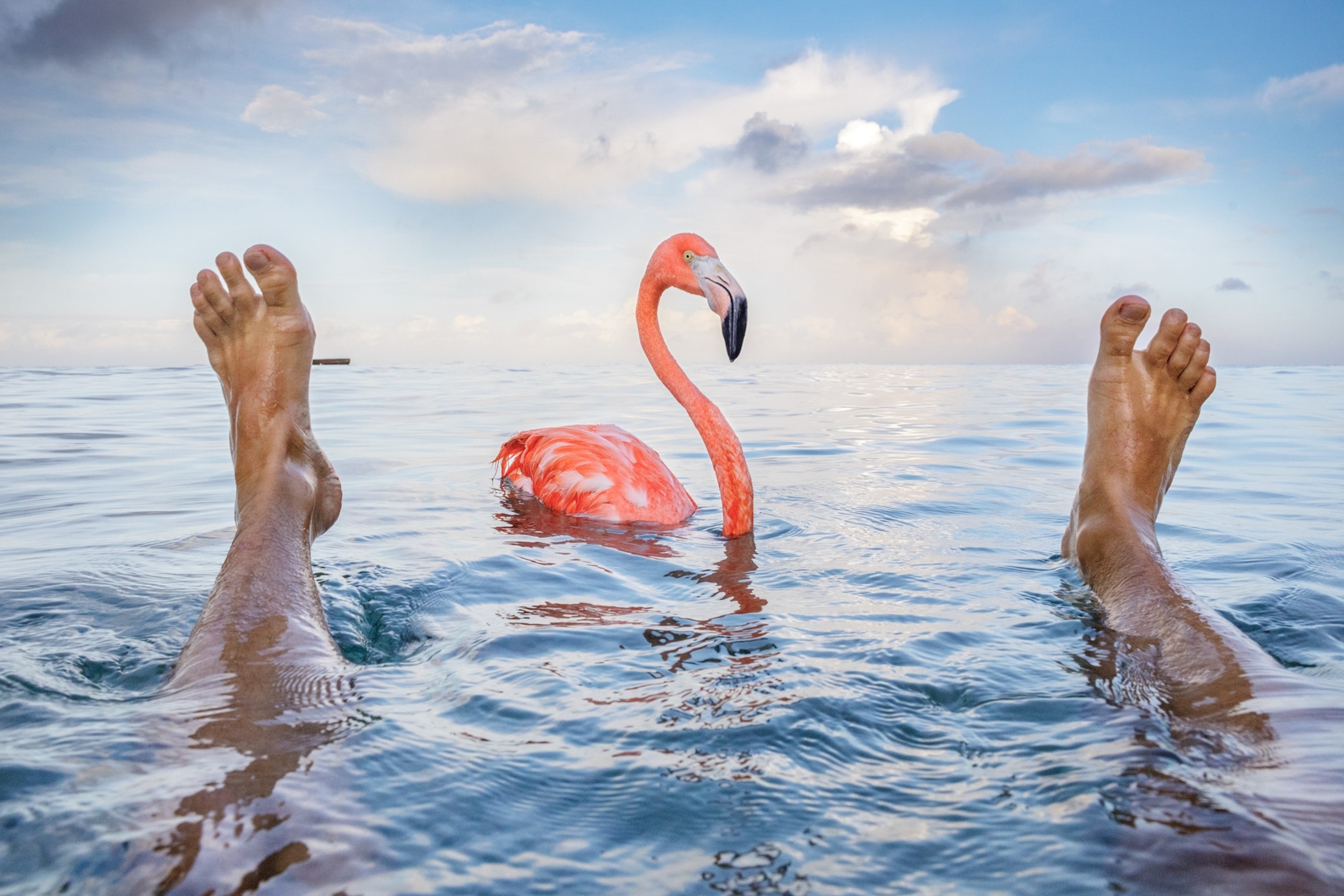
Meet Flamingo Bob, the poster bird for conservation
Rescued by a veterinarian in Curaçao, the charismatic bird has become a local celebrity—and spokesbird for environmental awareness.
Bob enjoys breakfasts of caviar, dips in his own saltwater pool, and biweekly foot massages on the beach. A charmed life, perhaps, but you could say he deserves it: Bob spends a lot of his time interacting with schoolchildren on his native island of Curaçao, serving as an emissary for conservation.
Bob, you see, is a flamingo.
Veterinarian Odette Doest rescued Bob in 2016, after the bird slammed into a hotel window and got a concussion. While rehabilitating the bird at her nonprofit wildlife sanctuary, Fundashon Dier en Onderwijs Cariben (Foundation for Animals and Education in the Caribbean), Doest discovered that Bob previously had been domesticated: He was very relaxed around people, and he suffered from bumblefoot, a chronic foot disease common in captive birds, which would have impaired his ability to catch food in the wild.
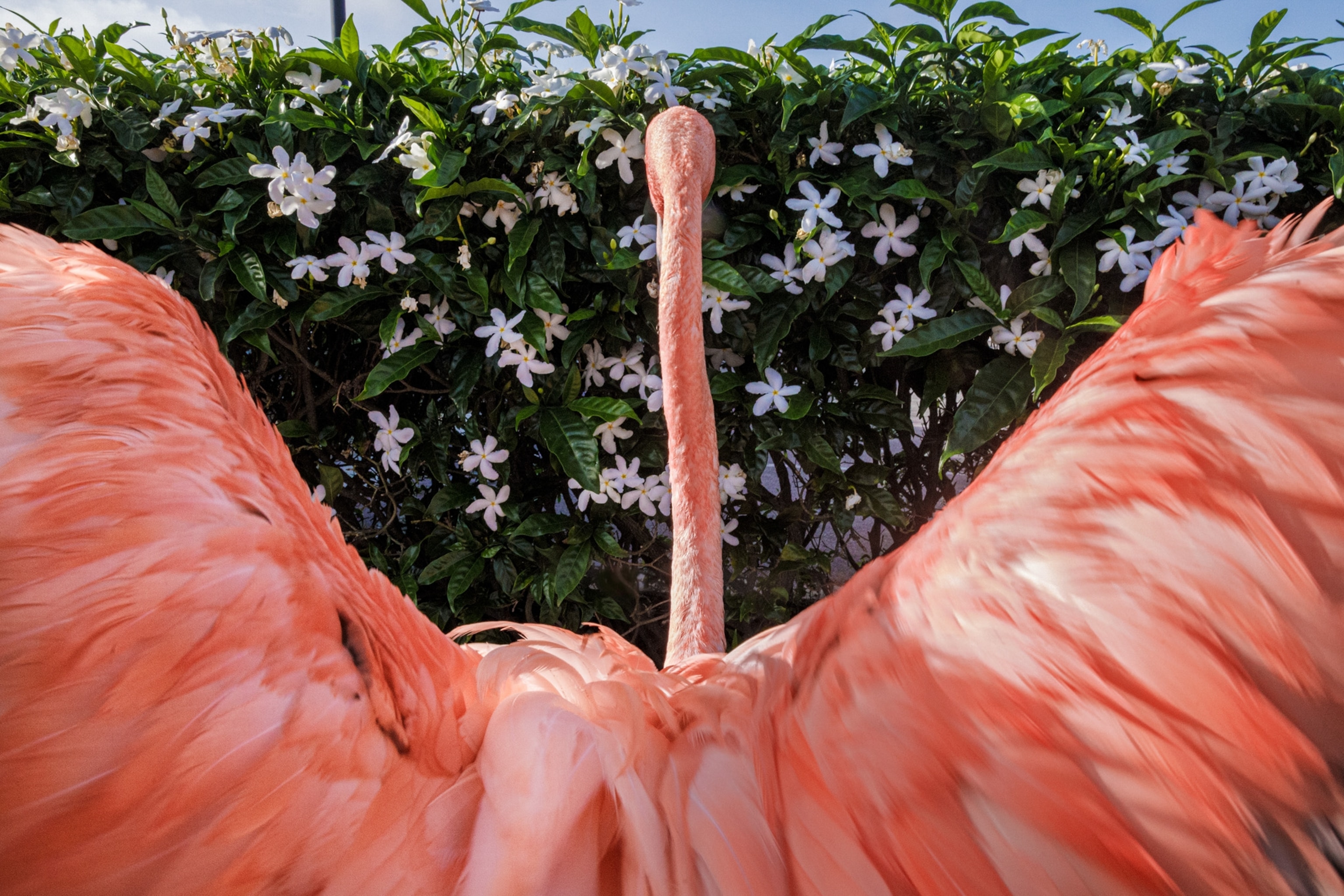
For those reasons, Doest decided to keep him as an educational animal at her sanctuary, alongside some 90 other animals. He lives on her property with, among others, a caracara, a species of tropical falcon; a donkey; a bevy of cats and dogs; and, until their deaths, two naughty pelicans that were always trying to escape. “I’ve stopped counting,” Doest admits. (Read about the surprising origin of American flamingos.)
When Doest began taking the then nameless bird on her foundation’s weekly visits to schools and other community gathering spots on the Dutch Caribbean isle, the flamingo became an instant celebrity. Media appearances followed, and when asked the bird’s name during a radio interview, Doest blurted out “Bob.” The name stuck.
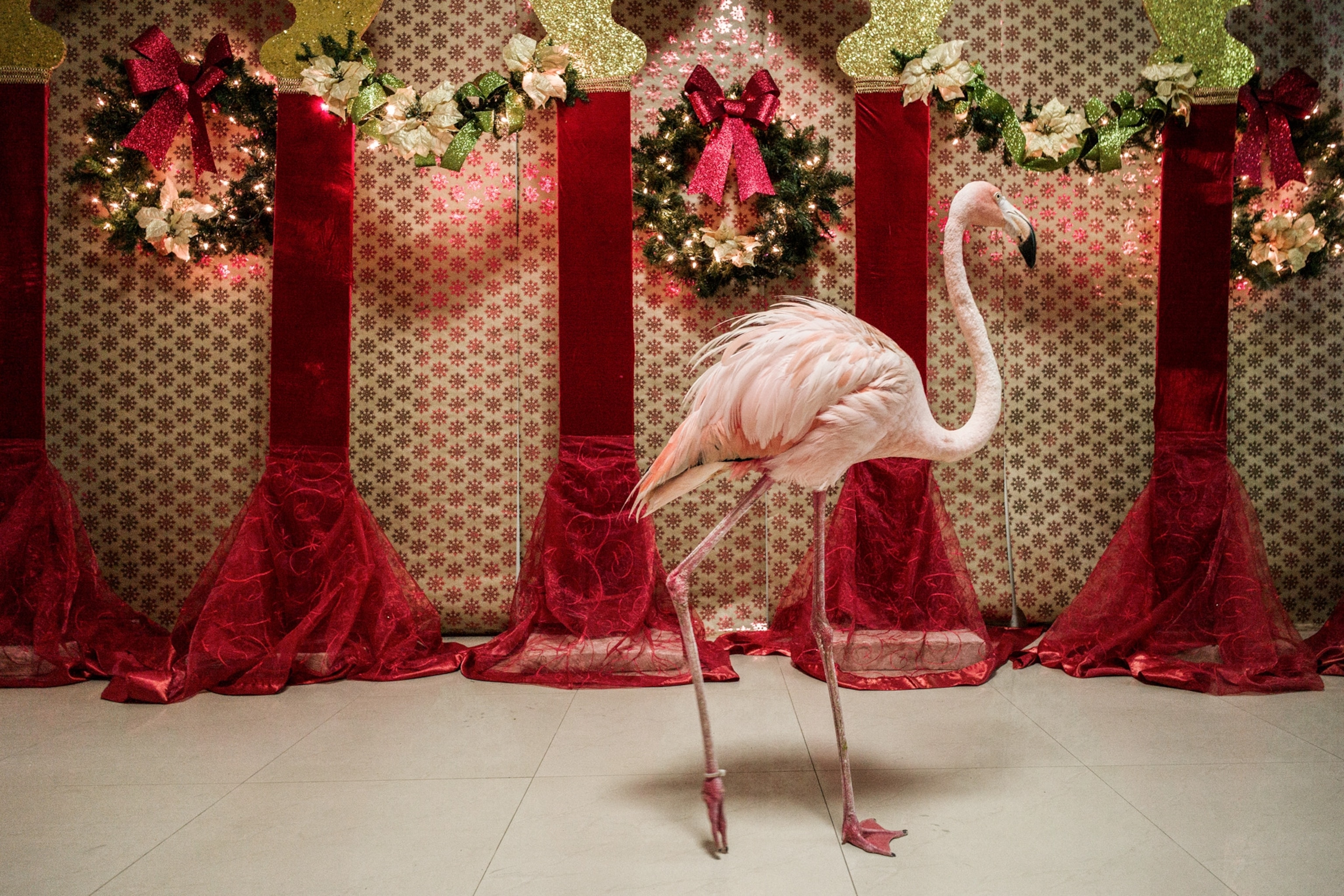
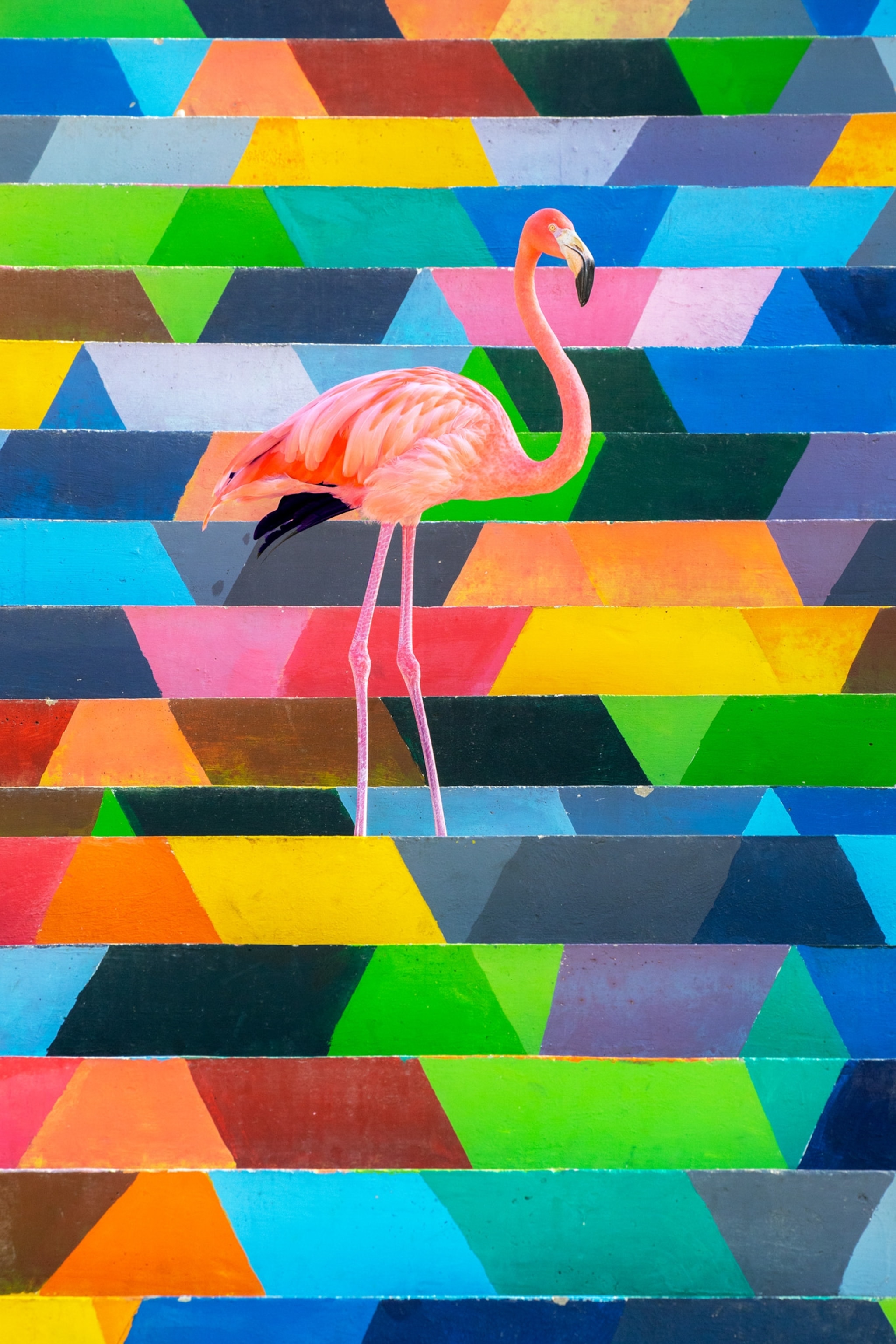
“Bob’s like the hot item—everyone wants Bob,” Doest says. That’s because most people have never seen such an elegant, colorful bird up close, much less one that’s so friendly. “When Bob starts flapping his wings,” she says, “children start to flap their arms, and so do grown-ups. They are so mesmerized by his beauty.” (See more pictures of Flamingo Bob.)
Just don’t try to take a #Bobselfie. “That’s not what Bob’s about,” Doest says firmly. “I have Bob for people to think about nature and the environment, and how a slight change in their habits can have a big impact on nature around us.”

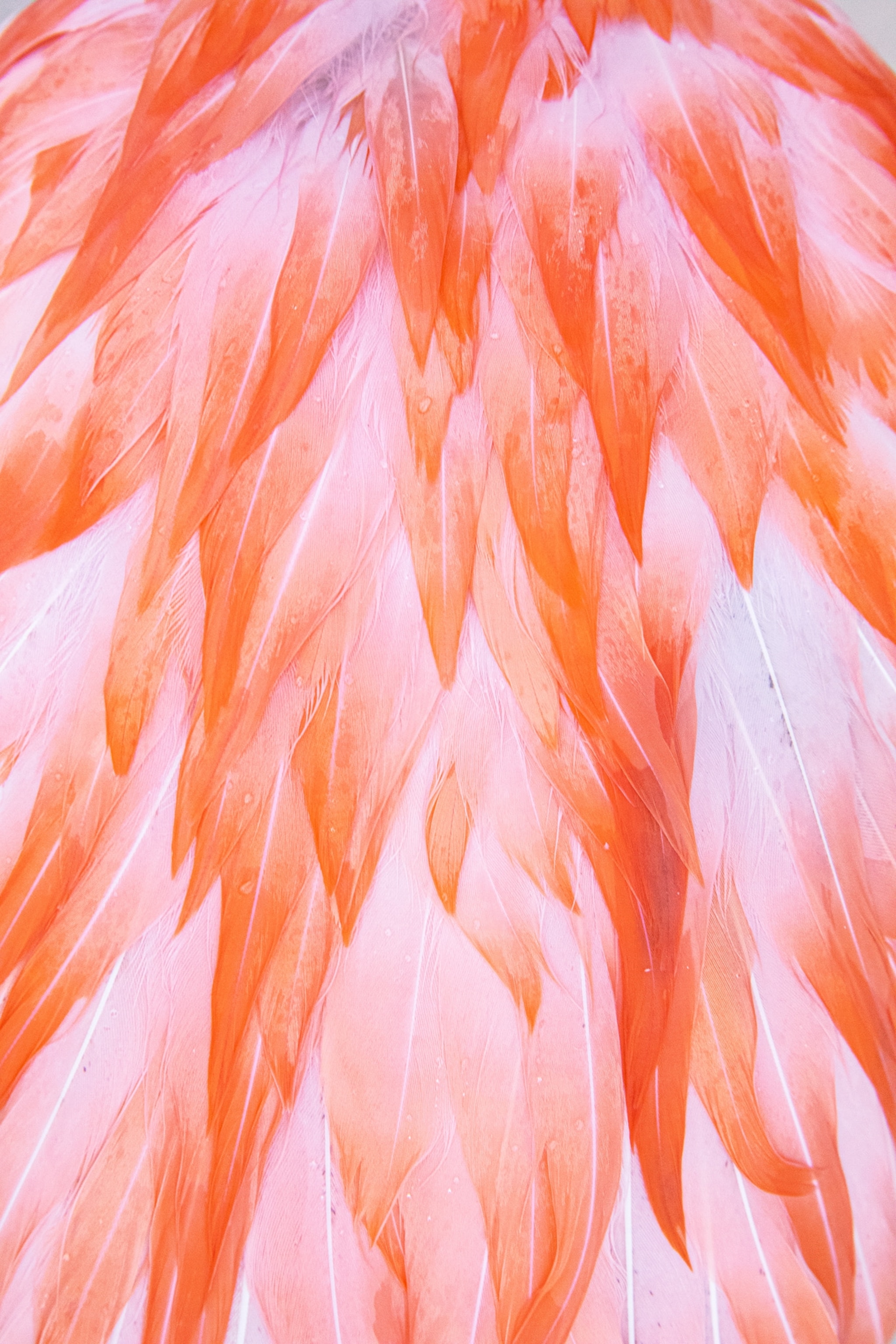
That could mean opting for reusable cups instead of plastic bottles or skipping the balloons at a birthday party or picking up trash on the beach—all things Doest says children take to heart because they’re so dazzled by Bob.
“She’s using him to tell a bigger story,” says Jasper Doest, a Netherlands-based photographer and Odette’s cousin who has chronicled the bird’s adventures for three years. “He by himself would just be a flamingo, and without Bob, she would not have that emblematic animal that gives her the attention to do her educational work.”
Jasper Doest first got the idea to photograph Bob when the bird sauntered into his bedroom at Odette’s house early one morning. “He walks around like he’s king,” Jasper says. “We see a lot of gloom-and-doom stories. This was a great chance to show a positive side.”
At home, Bob plays another educational role: He regularly takes other rehab flamingos under his wing, showing them how to eat from a bucket, for example. Odette says his presence helps newly arrived flamingos stay calm. Bob lives in a room in Odette’s house called the “bird room,” sharing the space with two other permanent flamingo rescues, George and Thomas. They each had to have a wing amputated after serious injuries—George from a dog bite and Thomas possibly from a feral animal or fishing gear—making it impossible for them to return to the wild.
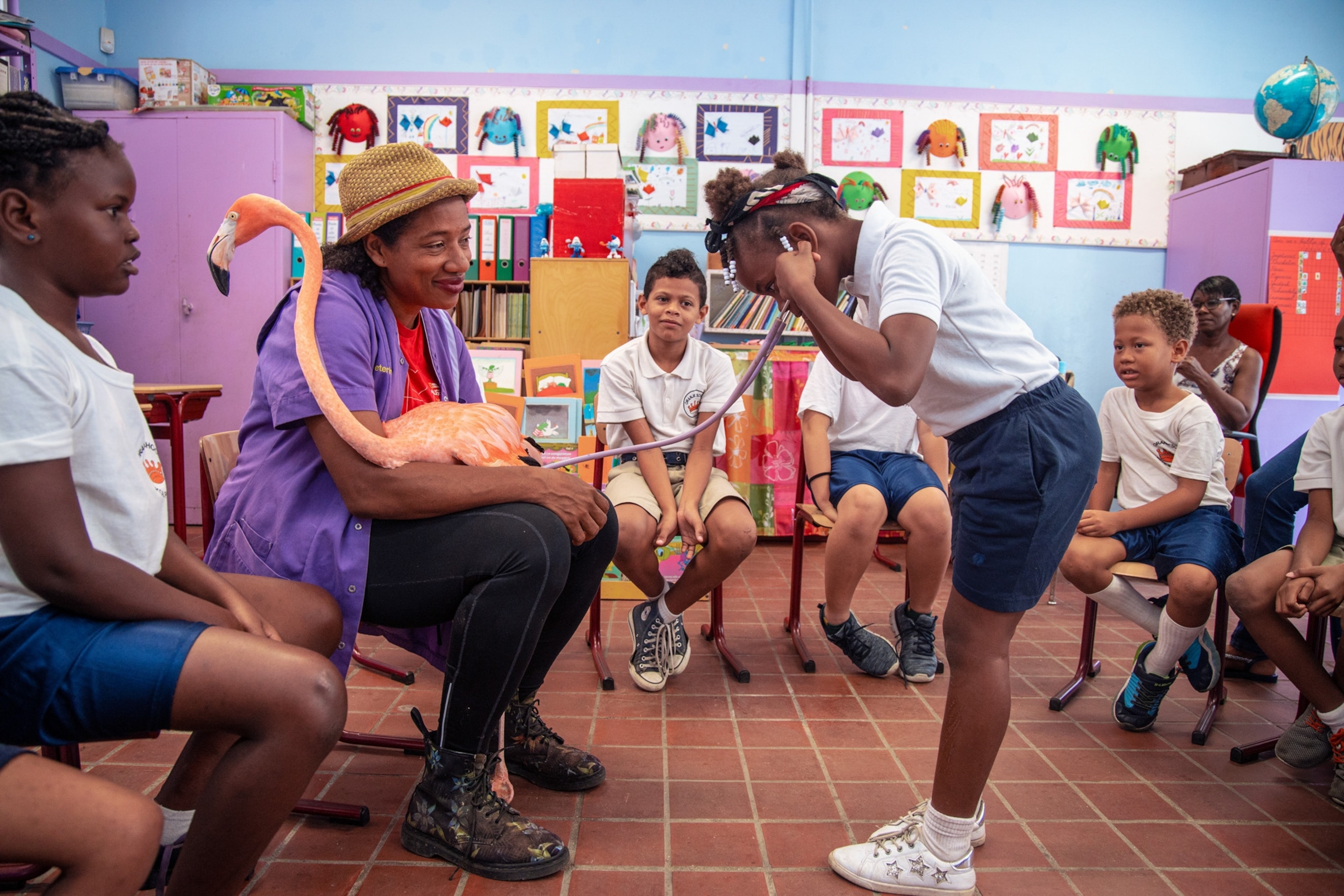
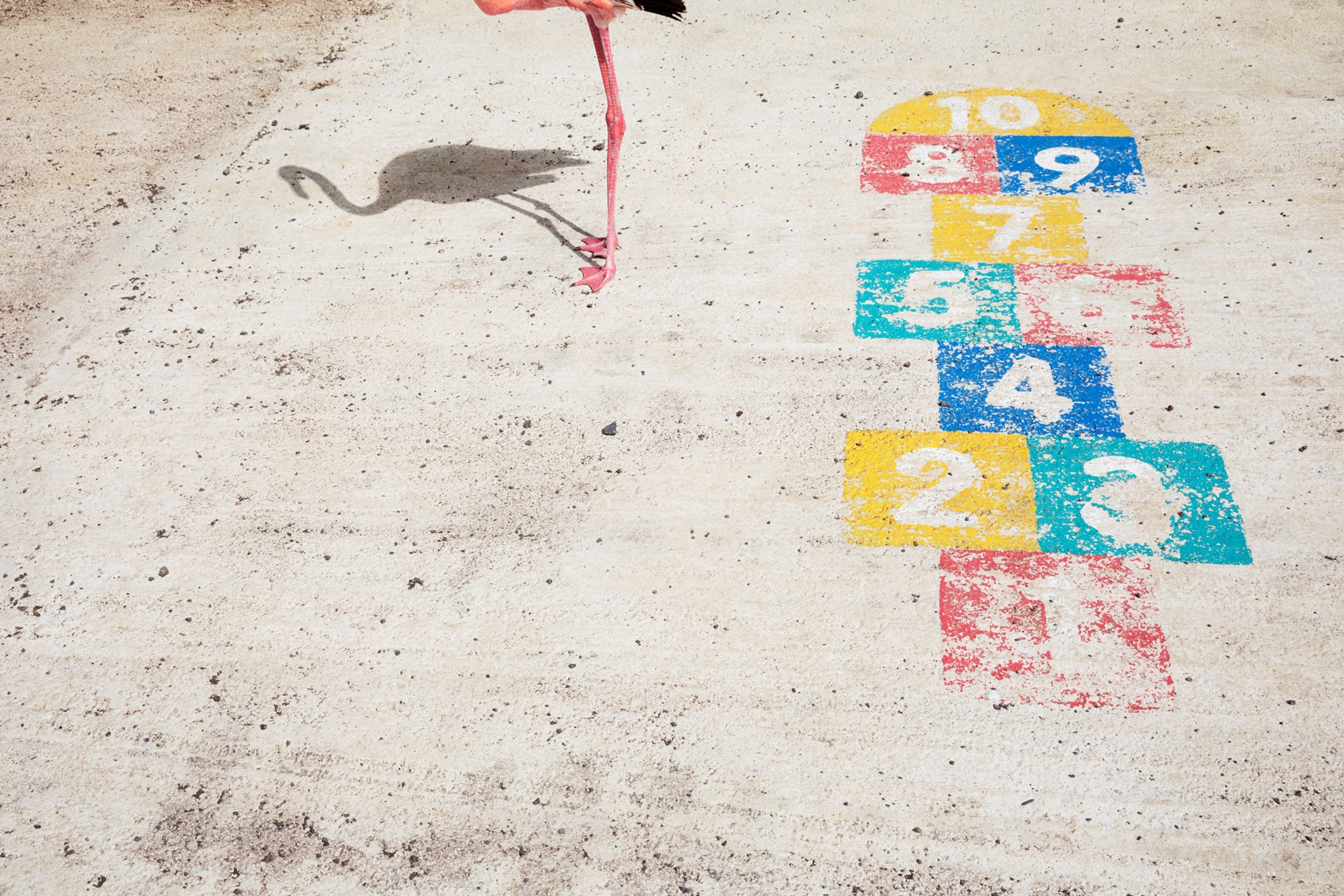
Many of Odette’s rescued birds were entangled in fishing lines, an environmental threat that she highlights in her talks, along with plastic pollution, coral reef degradation, and loss of mangrove forests to tourism development. As a local who speaks Curaçao’s language, Papiamento, Odette can connect with children on a level others might not.
It can be difficult to determine the impact of any education program, but Odette says students remember her lessons. When a female flamingo died recently after getting tangled in fishing line, Odette brought the line to a school and showed the kids. She told them: “She was just as beautiful as Bob, just as big and powerful and healthy, but because someone left a fishing line out, she’s dead.” Weeks later, teachers told her the children were still talking about it.
Odette encourages kids to be proud of their native wildlife—including a transient population of American flamingos, which number 400 to 600 in Curaçao and often are seen foraging among the island’s salt flats, where they use their webbed feet to stir up the crustaceans and algae that give them their characteristic pink color.
American flamingos were hunted nearly to oblivion for food and feathers during the late 1800s, when the species dipped to a low of about 10,000 animals restricted to a single Bahamian island. American flamingos have since rebounded throughout the Caribbean, Venezuela, and the southern United States. One location now has more than 50,000 nesting pairs, according to Jerry Lorenz, a flamingo expert and director of research at Audubon Florida. (Read why birds matter, and are worth protecting.)
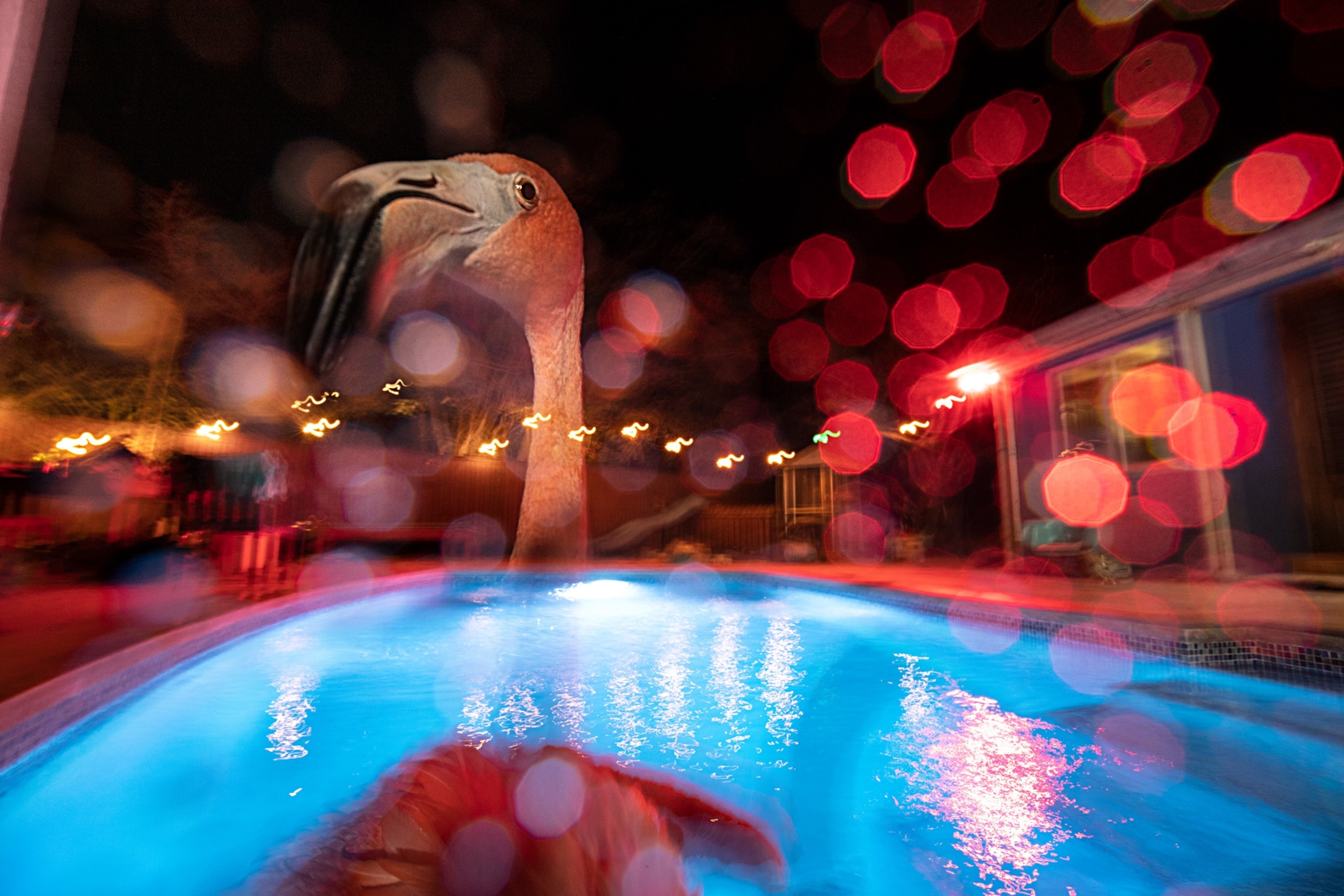
Lorenz says that American flamingos generally are sociable with people, making rescued birds that can’t be returned to the wild “wonderful” ambassadors for wildlife conservation. Busch Gardens Tampa Bay, in Florida, had an amiable Chilean flamingo, Pinky, that would greet guests at the park—and particularly liked kids, he says.
Odette estimates that Bob is 15 years old. Flamingos have been recorded living up to 50 years in the wild—and they likely can live longer in captivity, Lorenz says—so Jasper believes that he has many years left to document this Caribbean odd couple.
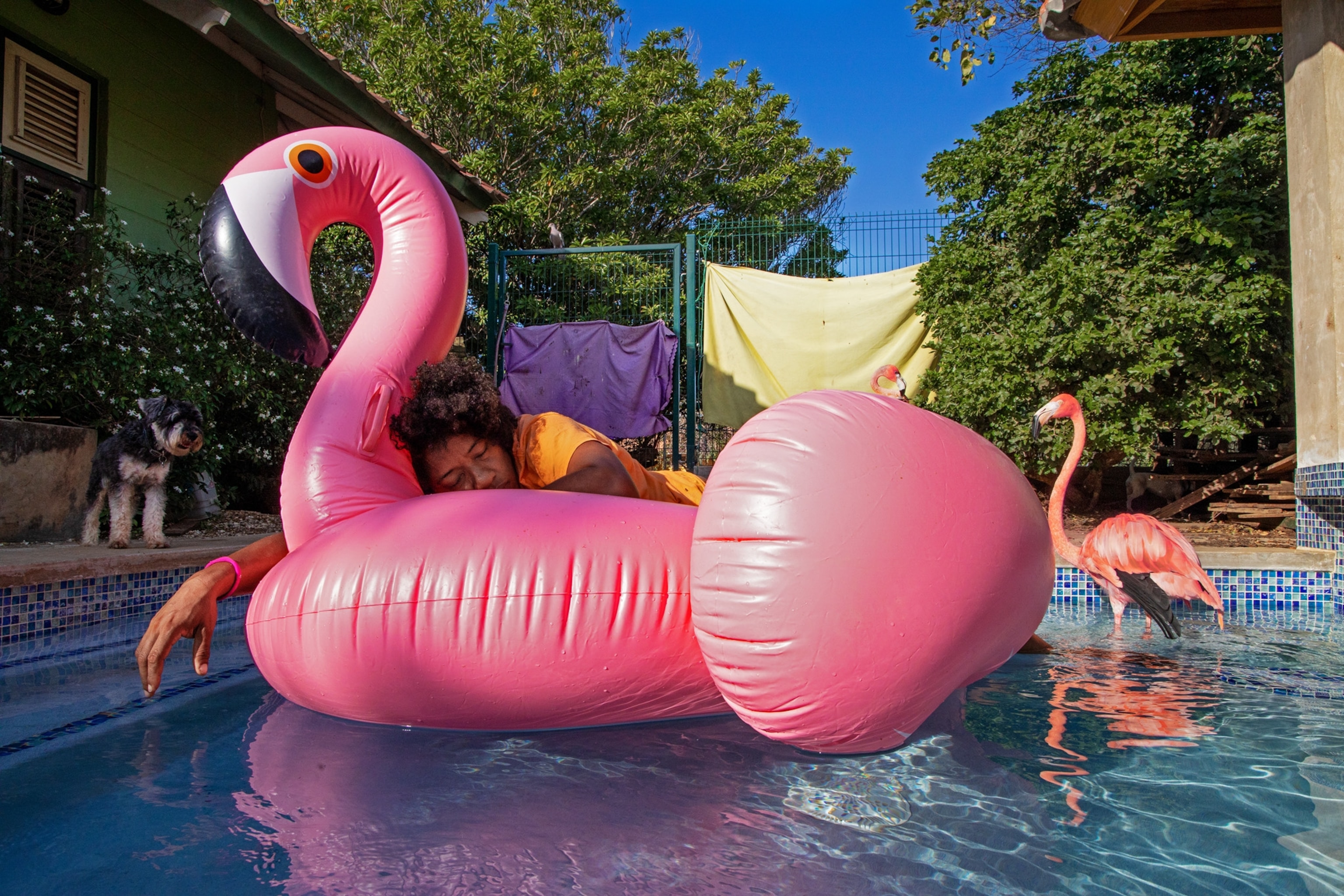
“I have pictures in my mind of Odette being an old lady in a rocking chair,” he says, laughing, “with flamingos all around her.” (See beautiful photos of bird feathers.)
